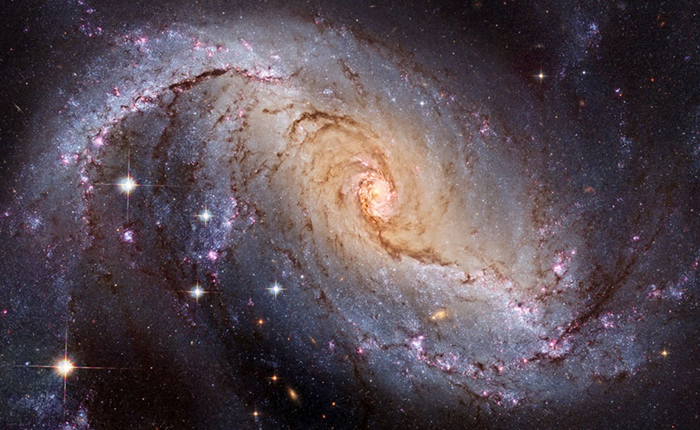High Energy Density Science

Under Pressure!
In support of NIF’s stockpile stewardship mission, the laser system’s unique capabilities are creating unprecedented opportunities for research in the growing field of high energy density (HED) science—the study of matter under extreme states of density and pressure (about 1 Mbar to 1 Gbar, or one million to one billion times the atmospheric pressure at Earth’s surface).
NIF can generate conditions similar to those occurring in giant planets and white dwarf stars, in the fusion reactions that power the sun and other stars, and in exploding nuclear weapons.
HED research is opening new frontiers in materials science research. Researchers have developed new capabilities for measuring the basic properties of matter, such as the equation of state (EOS) at the highest pressures ever achieved in a controlled laboratory experiment.
NIF experiments are highly diagnosed to provide unprecedented insights into HED systems, and are complemented by other experimental facilities at LLNL and elsewhere.
Learning from the Stars
By recreating the properties of celestial objects under scaled conditions in the laboratory, NIF enables scientists to explore extreme conditions such as the hot dense plasmas found in stars (see Discovery Science). LLNL researchers have long been interested in the physical processes of stars because the prime stellar energy mechanism, thermonuclear burn, is central to the Laboratory’s core mission of maintaining the safety, security, and reliability of the nation’s nuclear weapons stockpile.

NIF’s HED science program provides experimental data that yields important information on the characteristics of materials used in nuclear weapons as they age or are subjected to the immense pressures and temperatures of a thermonuclear explosion (see NIF and Stockpile Stewardship).
Data from HED experiments help inform and validate 3D weapon simulation computer codes and bring about a fuller understanding of weapon physics. Many NIF shots focus on advancing the prospect of inertial confinement fusion (ICF) ignition—a self-sustaining fusion reaction—for the Stockpile Stewardship Program.HED experiments also support other national security-related studies on such topics as radiation hydrodynamics, system-generated electromagnetic pulses (see “NIF Experiments Help Validate Electromagnetic Pulse Codes”), and energy transport through electromagnetic waves (see “Experiments Yield Insights into Supersonic Radiation Flow”).
More information
“LLNL Joins New Research on Atom-Changing Pressures,” NIF & Photon Science News, August 27, 2020
“10-Year Report Highlights NIF’s Contributions to Plasma Science,” NIF & Photon Science News, July 8, 2020
“HED Experiments Measure Supernova Magnetic Field Structure,” NIF & Photon Science News, June 25, 2020“Studying Matter Under Extreme Conditions,” Science & Technology Review, September, 2019
“Gently Compressing Materials to Record Levels,” Science & Technology Review, September, 2019
“High-energy-density science blooms at NIF,” Physics Today, February 1, 2017
“Laser Experiments Illuminate the Cosmos,” Science & Technology Review, December, 2016
“From microjoules to megajoules and kilobars to gigabars: Probing matter at extreme states of deformation,” Physics of Plasmas, September 17, 2015



